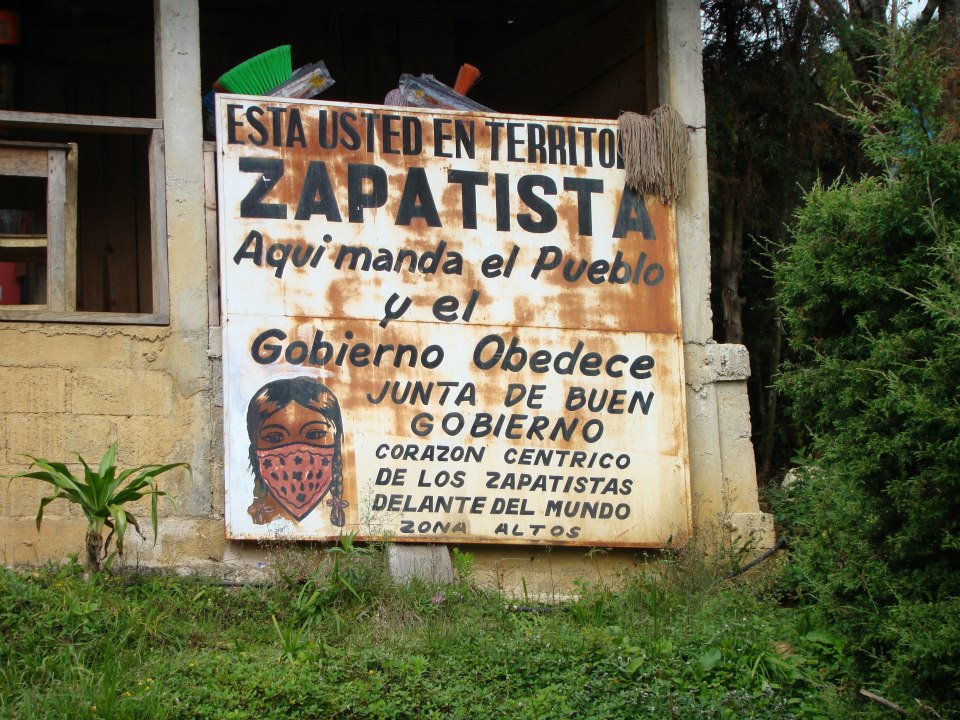
Magdalena Gómez
On December 3rd, La Jornada’s correspondent in Chiapas, Elio Henríquez, published a news item that is worrying because of what it could trigger in the activation of attacks on Zapatista communities, just a few days before the 30th anniversary of the EZLN uprising, in which context they recovered lands that they have occupied peacefully, continuously and publicly since 1995, certainly not exempt from attacks by armed civil groups to cause their forced displacement. It is the review of an interview with Raymundo Augusto García Álvarez, president of the surveillance council of the Displaced Rural Owners of the Conflict Zone civil association (La Jornada 3/12/23) who reported that “a federal judge” issued a ruling that orders the federal government to compensate for the “41,937 hectares occupied by the Zapatistas in 1994, and more than 400 owners of Ocosingo, Altamirano and Las Margaritas affected and who remained in the so-called conflict zone after the uprising.” He did not specify which judge or the date and content of the ruling, he only indicated that “it just came out” upon verifying that the authorities were negligent in defending their rights and pointed out that since then they and their families have suffered forced internal displacement and they are now waiting for the sentence to be carried out and a commission to be formed immediately: “we are not going to wait any longer.”
Subject to having more legal information and knowing the arguments of the official defendant, it is important that, apparently, the scenario of land recovery or demand in this regard is not included, and according to the interviewee it is about obtaining compensation. However, the immediate political implication is obvious. The issue of the recovery of occupied lands has been the driving force behind the vast majority of the attacks suffered by the Zapatistas and the negotiations that the federal and state governments made at the time with those who held the lands in question, including, as it emerged at the time, the payment to some of them “as compensation” was never made transparent or formalized. This is what Barbara Zamora pointed out: “These lands, at the time, were paid for by the federal government to the landowners, who claimed to be the owners” (La Jornada, 3/1/14).
On the other hand, it is almost certain that there is no willingness on the part of the government to comply with what the Judiciary supposedly orders. We do not know if there will be a response in that area to challenge this case, and the political scenario in the state does not foresee intervention that will stop the “justice” efforts of those who feel they have a recognized right.
Nor can we expect a policy of containment in favor of Zapatismo. There has been no justice in the successive attacks that have escalated in recent years. In short, this is information about a judicial resolution that can trigger an increase in tension against Zapatismo, and in that scenario, all that remains is to reinforce and reactivate attention and defense from the outside, since inside they already know how to proceed and have proven experience. The idea of not believing this type of news always arises. However, we cannot forget that good faith does not prevail in the social and political spheres of the state of Chiapas.
Something to highlight in the autonomous construction of Zapatismo is that the so-called recovered lands are the seat of its territory. As defined in ILO Convention 169, it is the entire habitat that people occupy or use in some way. At some point those who claim the land have accused them of leaving it idle. They ignore that schools, clinics, and all community spaces, even homes, are located there.
It is timely to remember that the UN special rapporteur on the rights of indigenous peoples released the report on her visit to Mexico in 2018. One paragraph says it all: current development policies based on megaprojects (extractive, energy, tourism, real estate, for example) constitute a major challenge for the enjoyment of the human rights of indigenous peoples. Added to the absence of self-determination and prior, free, informed and culturally appropriate consultation are territorial conflicts, forced displacements, criminalization and violence against indigenous peoples who defend their rights.
In that context we can value the message of a sentence that claims to demand payment for rights allegedly violated 30 years ago. While Zapatismo prepares to commemorate those 40 and 30 years of existence with a paradigm that involves all of us anywhere in the world: the fight is for life. And in a period so long that it does not fit into the six-year terms, much less into the so-called compensations.
Original article published in La Jornada on December 12, 2023 at https://tinyurl.com/5ypp6yeh
Translated by Schools for Chiapas.
